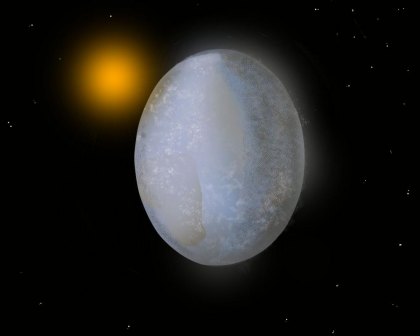
With every turn, scientists announce new, mind-boggling findings. Here are five recent stories that are changing the way we think about space:
Supersize Me
Researchers from the University of New South Wales in Australia have discovered a supersized earth. The planet is much like ours but with a mass five times as large, according to the university’s news office.
Known as GJ 832 c, the planet orbits a red dwarf star. Red dwarfs are the smallest and most abundant stars in the galaxy. In this case, the planet orbits its star in only 16 days. Keeping in mind that red dwarfs shine more dimly than our sun, scientists believe this planet and Earth have equivalent stellar energy. In fact, the planet may have a similar temperature, according to the university. That means this supersized neighbor may be habitable.
We have a flying saucer
Let's say we get to Mars. Then what? How do we deliver supplies and necessities to our astronauts?
NASA has an answer with its own flying saucer. On June 28, the space agency tested the saucer, known as the Low-Density Supersonic Decelerator, developed to evaluate new landing technologies for future Mars missions, according to NASA.
The saucer launched from a balloon roughly 120,000 feet over the Pacific Ocean off the coast of Hawaii. The flight was a success, and researchers recovered the test vehicle’s hardware, black box data recorder and parachute. NASA reported that the test was designed to determine the vehicle’s flying ability, while assessing new landing technology. Researchers say the technology will enable delivery of supplies needed for long missions to the Red Planet.
A “cold” star
A dim starlike body is as frosty as the Earth’s North Pole. Using space telescopes -- NASA's Wide-field Infrared Survey Explorer (WISE) and Spitzer Space Telescope -- scientists estimate the object to be 7.2 light years away.
They classify this frosty body as a brown-dwarf star. Like other stars, brown dwarfs start their lives as collapsing balls of gas, but they lack the mass to burn nuclear fuel and radiate starlight, according to NASA.
Temperatures on the star range from minus 54 to 9 degrees Fahrenheit (minus 48 to minus 13 degrees Celsius). Previous record holders for brown dwarfs, also found by WISE and Spitzer, were about room temperature.
The great (shrinking) red spot
Jupiter's Great Red Spot -- a swirling anti-cyclonic storm larger than Earth -- has shrunk to its smallest size ever measured, scientists said in May. Recent NASA Hubble Space Telescope observations confirm the Great Red Spot now is approximately 10,250 miles across, according to Amy Simon of NASA's Goddard Space Flight Center in Greenbelt, Maryland.
Historic observations as far back as the late 1800s gauged the storm to be as large as 25,500 miles on its long axis. Measurements from NASA Voyager 1 and Voyager 2 flybys of Jupiter in 1979 found it to be 14,500 miles across. In 1995, a Hubble photo showed the long axis of the spot at an estimated 13,020 miles across. And in a 2009 photo, it was measured at 11,130 miles across, according to NASA.
Ganymede, the largest moon in our solar system and a companion of Jupiter, might have ice and oceans stacked up in several layers like a club sandwich, according to new NASA-funded research. Previously, the moon was thought to harbor a thick ocean sandwiched between two layers of ice, one on top and one on bottom, the space agency reported.
Life might have once arisen on the icy moon because places where water and rock interact are important for the development of life, NASA reports.
Related:
Hubble sees evidence of vapor off Jovian moon
In Brief -- A swift trip to Jupiter; wholesale prices up
Map details largest moon in solar system